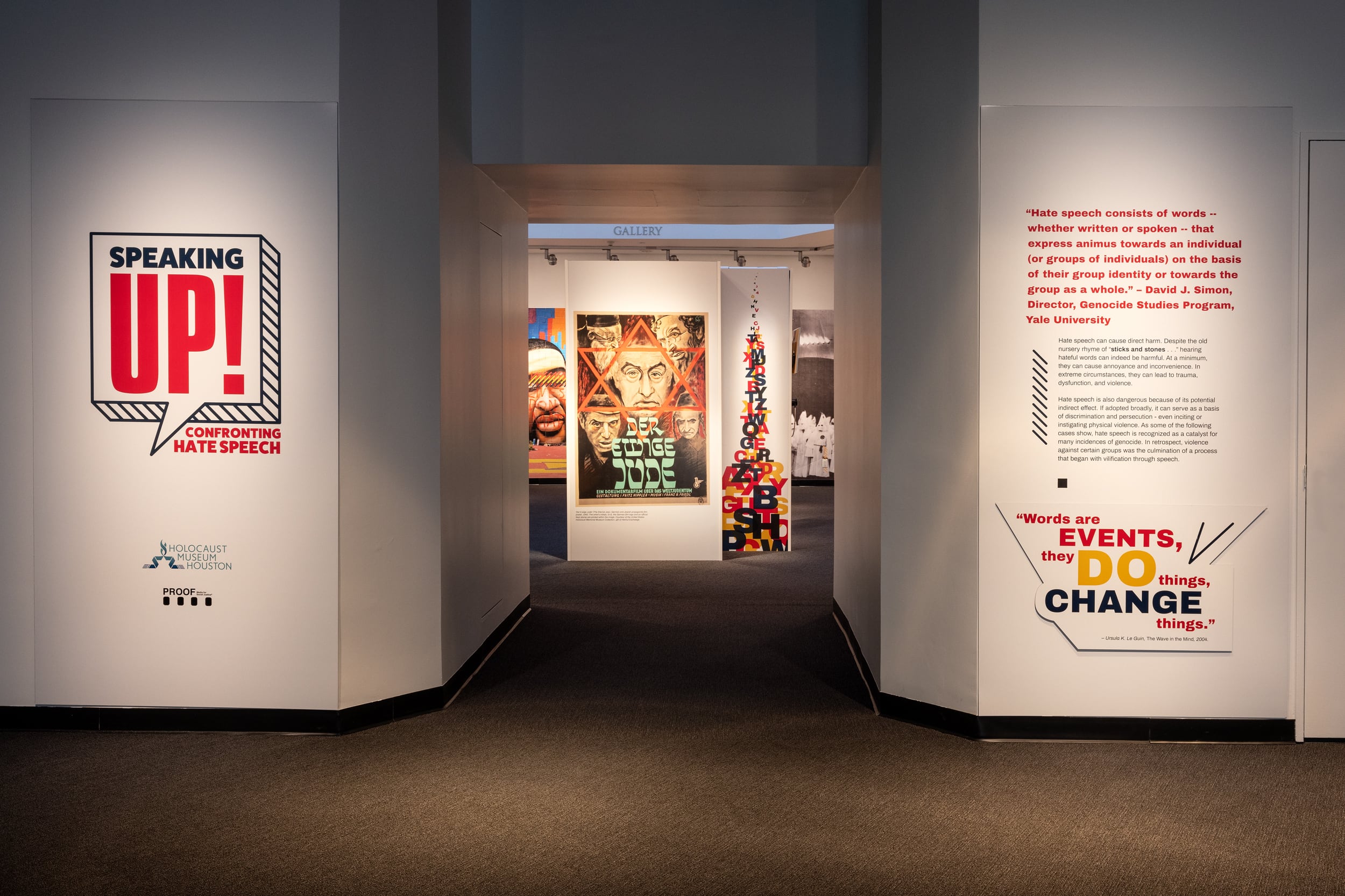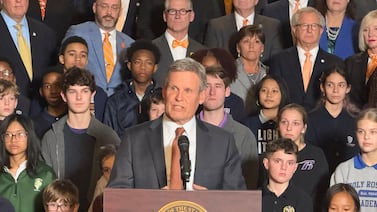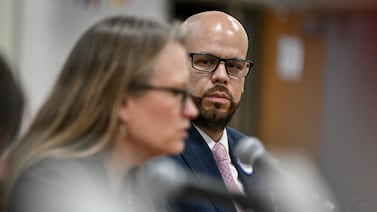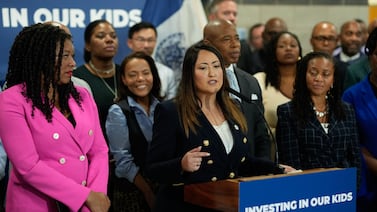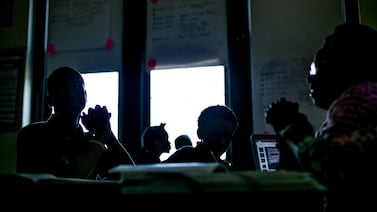Sign up for Chalkbeat New York’s free daily newsletter to keep up with NYC’s public schools.
As reports of hate and discrimination against marginalized groups are on the rise, a new Lower Manhattan museum exhibit aims to teach students about the roots of hate speech, as well as the dangerous outcomes that can occur if it is left unchecked.
And they’re hoping to get thousands of New York City public school students to see it.
The Museum of Jewish Heritage exhibit, titled “Speaking Up! Confronting Hate Speech,” opened on Wednesday, and will remain on display through the end of the school year, closing on June 29. It comes on the heels of a new partnership between the museum and the city’s public schools, with the exhibit aiming to show how language can lead to discrimination, persecution, and mass violence — providing students with historical and contemporary examples of how words can connect to harmful events, according to exhibit organizers.
“Acts of hate don’t start with violence,” said Jack Kliger, the museum’s president and CEO. “They start with words, and with thoughts, and with teaching. You have to be taught to hate.”
Organizers say the exhibit comes at a critical time for the city’s students — as statewide, hate crimes against Jewish and Muslim New Yorkers rose by 89% and 106%, respectively, in 2023, according to a report from the state Comptroller’s Office.
The exhibit will offer students a look at examples of propaganda posters from the time of the Holocaust, which sought to dehumanize Jewish people, said Sara Softness, the director of curatorial affairs at the museum. But the scope of the exhibit is global, she added, with sections devoted to other conflicts like the Rwandan genocide in 1994 and the killings of the Muslim Rohingya people in Myanmar in 2016 — including how social media contributed to the latter of these atrocities.
“We’re moving not only through these global examples, but the way in which time has changed the transmission of those messages,” Softness said.
The exhibit also looks at historical and contemporary hate speech and discrimination targeted at Black, Native American, and Asian American Pacific Islander communities in the U.S., according to officials.
The museum hopes to equip students with tools to combat hate speech in their own communities, Softness said.
“The last third of the exhibition is all about how to counteract hate speech,” she said. “There’s counter speech: So how do you undermine a message that has started to proliferate online? How do you limit the dissemination of the message? How can you use protests to stand up to hateful rhetoric? How can you even just think about erasing graffiti as a way to stand up against the spread of hate?”
The troubling reports of rising hate follow a year that saw heightened tensions within school communities, as students and educators grappled with the ongoing Israel-Hamas war. In October, Hamas militants killed 1,200 people and took over 240 hostages, according to reports. Israel, in response, has bombarded the Gaza Strip, fueling a humanitarian crisis and killing more than 40,000 Palestininans, including many children, according to health authorities there.
That conflict has spilled over into the city’s classrooms, with several high-profile incidents garnering national attention. Meanwhile, schools Chancellor David Banks was called to testify at a congressional hearing in Washington D.C., where he defended the school system’s response to antisemitism.
Between October and the May hearing, there had been roughly 280 incidents of religious bias in New York City schools, with 42% involving antisemitism and 30% directed against Muslim students, according to figures Banks shared at the time.
Nearly 60% of Muslim students across the five boroughs and Long Island reported experiencing religious-based bullying at school, according to a recent report by the Council on American-Islamic Relations. The group noted the city had seen “a notable surge in anti-Muslim, anti-Arab, and anti-Palestinian sentiment” since October.
Amid this backdrop, city officials have looked for other ways to tackle reports of rising antisemitism, Islamophobia, and other forms of hate. Earlier this year, the city’s Education Department rolled out additional training to educators on how to have productive conversations about the ongoing conflict in the Middle East.
The city’s Education Department is developing new Hidden Voices curriculums centered on the stories and contributions of Jewish and Muslim people, expected to be available by June 2025. The Hidden Voices curriculums, which include LGBTQ history and Asian American history, aim to elevate historical figures largely left out of textbooks.
The city’s public schools are also partnering with the Museum of Jewish Heritage to allow more eighth graders to learn more about the Holocaust through free field trips to the museum — bringing in more than 85,000 students over three years. Through that partnership, many of the city’s students may be able to view the new exhibit, as well as others offered by the museum.
“At the Museum of Jewish Heritage, we come from a very specific angle, thinking about historic and contemporary antisemitism,” Softness said. “But there’s a way in which hate speech, as presented in this exhibition, is shown as fairly universal. There are certain patterns and systems of the way that speech can be disseminated that lead to violence … that we really need to learn about in order to combat.”
Julian Shen-Berro is a reporter covering New York City. Contact him at jshen-berro@chalkbeat.org.

